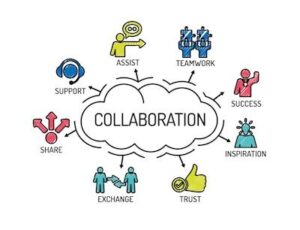
Last week, we had the privilege of hearing from Mike Ribble, the author and digital citizenship expert who outlined the 9 elements of digital citizenship. It’s easy to feel overwhelmed when considering the breadth of digital responsibility required of today’s students (and even adults). From digital access to cyberbullying, the scope of these elements covers much of what we interact with online daily.
One of the key takeaways from Ribble’s talk was how crucial it is to approach teaching digital citizenship just like any other subject—one step at a time. Just as we wouldn’t throw a math student into calculus without first teaching them basic arithmetic, we shouldn’t expect students to navigate the complexities of the digital world without breaking it down for them.
The Evolving Role of Ribble’s 9 Elements in Digital Citizenship

Ribble’s 9 elements of digital citizenship are designed to help educators and students understand how to engage with the digital world responsibly. But as technology evolves, these elements must also adapt. For example, Ribble talked about Meta’s (formerly Facebook) introduction of a teen Instagram with guardrails—protections that many argue should have existed long ago. These guardrails were a response to growing concerns about how teens navigate social media, but the fact that they were loosened shortly after the app’s launch highlights a broader issue: Are tech companies doing enough to protect young users? And how do we, as educators, ensure that our students are safe, savvy, and social?
In the classroom, we can’t rely solely on tech companies to do the heavy lifting. Ribble’s 9 elements help lay the foundation for responsible digital engagement by focusing on digital safety, literacy, and social responsibility. As we move forward, these elements will likely evolve to include deeper discussions around artificial intelligence, data privacy, and algorithmic biases—topics that are becoming increasingly important in the digital landscape.
The Three S’s: Safe, Savvy, and Social
One of the most memorable aspects of Ribble’s talk was his emphasis on the three S’s of digital citizenship—safe, savvy, and social. These three principles are the bedrock of what it means to be a responsible digital citizen:
- Safe: Ensuring students understand cybersecurity, from password management to recognizing phishing attempts, is crucial in an era where cyberattacks are more common than ever.
- Savvy: Being digitally literate isn’t just about knowing how to use technology, but understanding how to critically engage with content. This includes distinguishing between reliable sources and misinformation—a skill that documentaries like those mentioned in the readings from Never Gallery Ready and Zanniee emphasize.
- Social: Being ethical online involves understanding the impact of one’s actions on others. Whether it’s practicing kindness in a social media comment section or reporting harmful content, students need to be taught the responsibilities that come with having an online presence.
These three pillars encapsulate the broader 9 elements of digital citizenship and make them more accessible to students and educators alike.
Challenges in Implementing the 9 Elements

While Ribble’s framework offers a comprehensive approach to digital citizenship, it’s not without challenges. One of the biggest hurdles educators face is that technology is constantly changing. How do you teach something that seems to evolve overnight? For example, Instagram’s guardrails for teens were loosened shortly after they were introduced, showing how unpredictable the digital landscape can be.
Another challenge is that many educators feel ill-prepared to teach digital literacy, particularly when they themselves might not be fully comfortable with emerging technologies. Ribble emphasized the importance of working with colleagues to grow knowledge and confidence in teaching digital citizenship. This collaborative approach can help educators support each other and create a more unified front in addressing digital issues in the classroom.
Additionally, many students come from homes where digital citizenship isn’t a priority, and parents may not be equipped to guide their children. This places even more responsibility on teachers to fill the gaps in students’ understanding of online safety and responsibility.
Mitigating Challenges
So, how can we mitigate these challenges? For one, we need to shift the mindset that digital citizenship is an “extra” or something that can be taught in a single lesson. It needs to be woven into every aspect of education, much like math or language arts. This gradual, consistent approach ensures that students are building their digital skills over time, rather than in isolated lessons.
Educators also need more support from school administrations in the form of professional development. Providing teachers with ongoing training and resources helps ensure that they are comfortable with both the technology and the pedagogy behind teaching digital citizenship. Ribble’s 9 elements can serve as a guide to structuring these training programs.
Resources and Support for Promoting Digital Citizenship
To effectively promote digital citizenship, schools need a combination of resources, collaboration, and practical tools. Here are a few ideas based on Ribble’s talk and the assigned readings:
- Media Literacy Documentaries: The documentaries recommended in the readings from Never Gallery Ready and Zanniee offer powerful insights into media literacy. These resources can help students critically analyze the content they encounter online, from recognizing deep fakes to understanding the influence of social media algorithms.
 Collaborative Learning: As Ribble mentioned, educators should collaborate with each other to enhance the teaching of digital citizenship. Schools could create cross-curricular projects where students apply digital citizenship principles across different subjects, reinforcing the idea that these skills are essential in every part of life.
Collaborative Learning: As Ribble mentioned, educators should collaborate with each other to enhance the teaching of digital citizenship. Schools could create cross-curricular projects where students apply digital citizenship principles across different subjects, reinforcing the idea that these skills are essential in every part of life.- Engaging with Parents: Schools can provide parents with workshops or resources to help them understand their role in promoting digital citizenship at home. This includes teaching parents how to set boundaries around screen time, online privacy, and helping their children develop good online habits.
- Safe Social Media Practices: Finally, educators can encourage students to use social media platforms like Instagram, Snapchat, Twitter, and Facebook responsibly by teaching them about privacy settings, reporting harmful content, and recognizing when to log off.

Conclusion: One Element at a Time
Digital citizenship may seem like a daunting task to tackle in today’s educational settings, but as Ribble pointed out, it’s all about breaking it down one element at a time. With a clear focus on safety, literacy, and social responsibility, educators can help students navigate the digital world confidently and ethically. By working together and utilizing the right resources, we can ensure that the future of digital citizenship is bright, empowering students to be safe, savvy, and social—both online and off.
Furthermore, to read more specific examples of how to connect curriculum please visit a previous blog of mine here.
There are lots of blog posts to come, don’t wander too far!